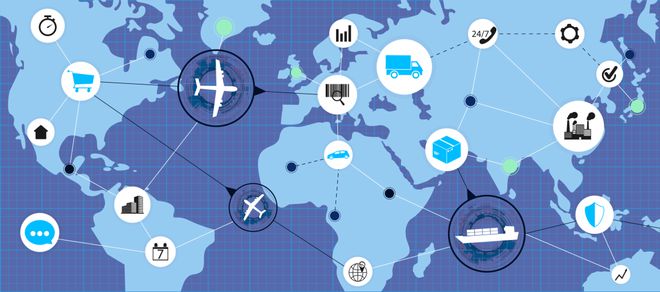DHL recently released an Industry Insight sharing the top five supply chain risks most likely to occur in 2024, as summarized by its partner, Everstream Analytics, a global supply chain insights and risk analysis firm. The top five risks are increased weather extremes, increased environmental regulations, rising protectionism, geopolitical instability and commodity shortages.
Everstream Analytics identified extreme weather as the biggest risk facing global supply chains. In the U.S., for example, the frequency of extreme weather events that cause billions of dollars in economic losses has increased from every four months in the 1980s to every three weeks today; the Panama Canal is facing its worst drought since 1950, with daily vessel restrictions and further extension of the Vessel Draft Height Restriction Initiative (VDRI) causing delays to bulk carriers, freighters, and tankers; and winter storms are being exacerbated by record high ocean temperatures, resulting in more delays. Winter storms, exacerbated by record high ocean temperatures, caused more delays and cancellations of cargo ship schedules. This suggests that the 'age of extremes' may become the new normal, with extreme weather events expected to remain high in 2024.
According to Everstream Analytics, global environmental regulations are on the rise. According to Everstream Analytics, the number of global environmental regulations has increased by a factor of 38 over the past 40 years, and more are on the way as countries strive to achieve net-zero emissions and resource conservation. The increasing number of environmental regulations will likely have an impact on businesses, even those with ESG (Environmental, Social, Governance) strategies in place. nearly half of all shutdowns and lawsuits in the U.S. in 2023 will be due to environmental violations, and Everstream Analytics predicts that future regulations will address deforestation, packaging, and chemicals. Supply chain managers will need to adapt their production methods to comply with regulations, and this may expose them to a range of new supply chain issues such as administrative burdens, operational costs and price increases.

Everstream Analytics predicts that protectionism will drive supply chain diversification. While economists have repeatedly shown that protectionism by some countries has not achieved its goals, escalating trade disputes will lead to an increase in export controls and sanctions, which will have an impact on supply chains, prompting companies to look for alternative technology suppliers to avoid supply chain disruptions. The trend of supply chain diversification will continue in the future.
Geopolitical instability will also continue to affect global supply chains, Everstream Analytics said. According to the United Nations, in 2023, the total number of violent conflicts reached its highest point since World War II. According to the UNHCR, 110 million people have been forcibly displaced globally. The impact of increasing geopolitical instability on supply chains is also becoming more severe.
Everstream Analytics analyzes that commodity shortages will also become a prominent issue in the supply chain space. 2024 is likely to see supply chain issues in the commodities space, with suppliers facing shortages of core agricultural products. This outcome is the result of companies analyzing factors such as high input prices, concerns about agricultural profitability, increasing protectionism and extreme weather events. In 2023, shortages of agricultural commodities such as raw sugar, natural rubber, rice and soybeans have had a significant impact on production. Countries have moved to protect domestic food security by imposing nearly 35 export bans and controls on key agricultural products. Export restrictions imposed by major rice and sugar suppliers such as India, Thailand and Pakistan, which account for 28 per cent of global sugar supply, have had an impact on global markets. This year, protectionist measures on commodity exports may continue to ramp up, with further impacts on supply chains.

